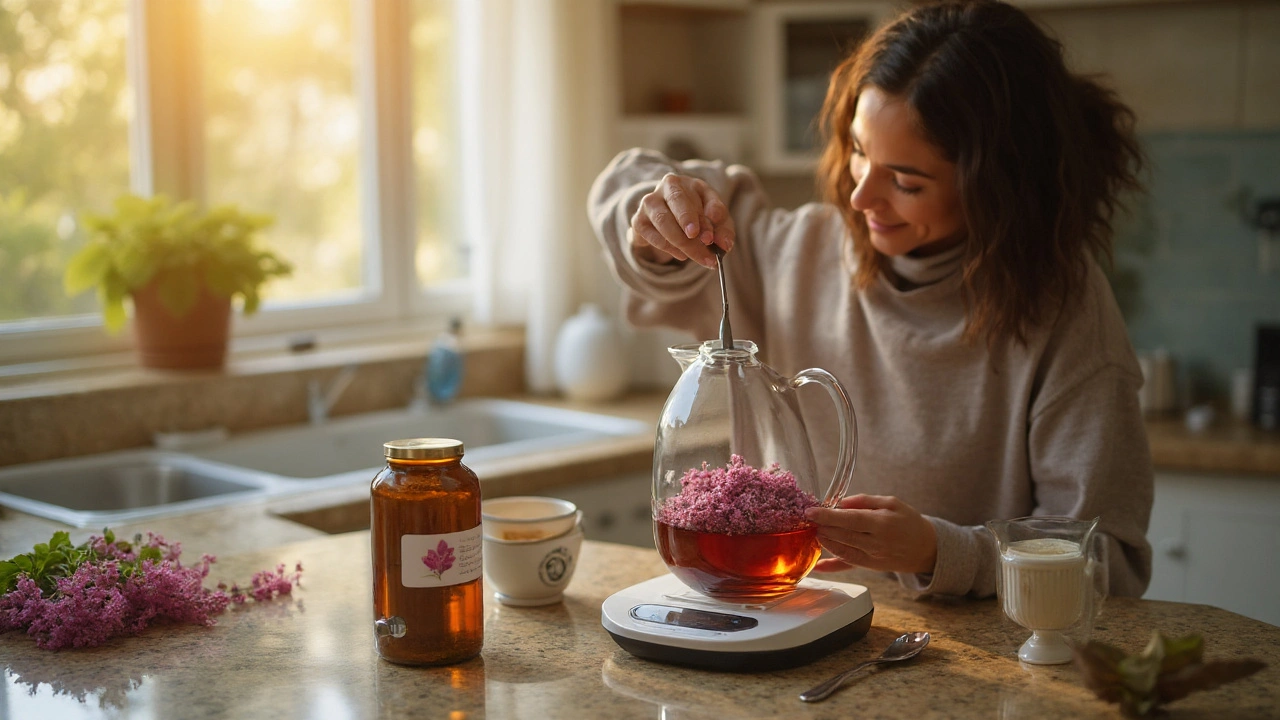Red Clover Safety: Practical Advice Before You Try It
Red clover contains isoflavones — plant compounds that act a bit like estrogen in the body. That makes it useful for some people, but it also raises safety questions. If you're tempted to try red clover for menopause symptoms, skin issues, or general detox blends, this page tells you what to watch for and how to use it more safely.
Who should avoid red clover
If you have hormone-sensitive cancer (breast, ovarian, uterine) or a history of those conditions, skip red clover unless your doctor says otherwise. Because it can act like estrogen, it may interfere with hormone treatments or raise risk for people with those conditions. Pregnant and breastfeeding women should avoid it — we don’t have good safety data for babies.
Also avoid red clover if you use blood-thinning drugs like warfarin, aspirin at high doses, or other anticoagulants. Red clover can change clotting behavior and make bleeding worse. If you plan surgery, stop red clover at least 1–2 weeks before the procedure and tell your surgical team.
Practical safety tips
Start with the lowest dose on the product label and try it for a short period to see how you react. Typical side effects are mild: upset stomach, headache, rash, or occasional dizziness. If you notice unusual bleeding, severe abdominal pain, yellowing skin, or intense headaches, stop using it and get medical help.
Check interactions. Red clover can affect blood thinners and some hormone drugs (like tamoxifen or hormone replacement therapy). It may also reduce the effectiveness of certain medications or increase side effects. Ask your pharmacist whether your prescription drugs interact with red clover.
Allergy warning: if you’re allergic to clover, alfalfa, or other legumes, don’t use it. People with liver disease should use caution — there are rare reports of liver problems tied to herbal supplements that act on metabolism.
Want a safer approach? Use standardized extracts from reputable brands. Look for third-party testing and clear ingredient lists. Keep doses within recommended ranges on the label, and avoid mixing multiple estrogenic herbs (like black cohosh and high-dose soy) without professional advice.
If you’re unsure, ask a healthcare pro who knows herbs. Tell them all supplements and drugs you take. They can help weigh benefits and risks for your situation.
Having a bad reaction? Stop the herb, save the bottle, and see your doctor. For severe symptoms like trouble breathing, heavy bleeding, fainting, or chest pain, call emergency services right away.
Curious about safe herbal detox basics or alternatives to red clover? Check our Beginner's Guide to Herbal Detox or the Black Cohosh article for more context on hormone-like herbs and safer choices.

Best Time to Drink Red Clover Tea: Timing, Benefits, Dosage, Safety
Wondering when to drink red clover tea? Get clear guidance on timing, dosage, and safety for hot flashes, sleep, digestion and more, with evidence-based tips.
view more